I, in a write last night gave barter to the interest of the 1800's and in the inch to a year that gave the early years of our country the U.S.A. just barely breadth I gave heed too. The chase of mathematicians in just a happenstance I took note to the British Castle of Ages to our year in just the basic. We as a country barely had a candle for the log cabin while England has Vegas.
What stride today in that European mile does a measurement in just the construction of our country vs. their countries of those specific times? As I further nothing more than a thought, the 'Give us your pour' comes to mind as I wonder did we dump the seed (moldy or not) into the fire for the bag itself? Did we even have the ability to make clothes or furniture or anything at all. Our predecessors came with what was on their shoulders and empty their hands were as starvation often plagued those early Pilgrims. The solid 'Saw' as in an implement to cut a tree down to build a log cabin did not seem readily as in Europe the built just stilled? These minor raises have yet to find ground of path to brief even a cobblestone road to express that carrier of barrier that our forefathers rang.
I must think with pen in-hand as the sure victual to such is appearing as the horror of what has taken to our backs more than I can imagine presently.
Early modern France
France on the eve of the modern era (1477). The red line denotes the
boundary of the French kingdom, while the light blue the royal domain.
|
Part of a series on the
|
|---|
| History of France |
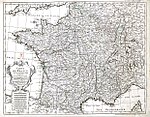 |
| Timeline |
The period is dominated by the figure of the "Sun King", Louis XIV (his reign of 1643–1715 being one of the longest in history), who managed to eliminate the remnants of medieval feudalism and established a centralized state under an absolute monarch, a system that would endure until the French Revolution and beyond.
Contents
Geography
French territorial expansion, 1552–1798
The late 15th, 16th and 17th centuries would see France undergo a massive territorial expansion and an attempt to better integrate its provinces into an administrative whole. During this period, France expanded to nearly its modern territorial extent through the acquisition of Picardy, Burgundy, Anjou, Maine, Provence, Brittany, Franche-Comté, French Flanders, Navarre, Roussillon, the Duchy of Lorraine, Alsace and Corsica.
Royal flag in presence of the Royal family of the Kingdom of France
- under Louis XI – Provence (1482), Dauphiné (1461, under French control since 1349)
- under Henry II – Calais, Trois-Évêchés (1552)
- under Henry IV – County of Foix (1607)
- under Louis XIII – Béarn and Navarre (1620, under French control since 1589 as part of Henry IV's possessions)
- under Louis XIV
- Treaty of Westphalia (1648) – Alsace
- Treaty of the Pyrenees (1659) – Artois, Northern Catalonia (Roussillon, Cerdagne)
- Treaty of Nijmegen (1678–9) – Franche-Comté, Flanders
- under Louis XV – Lorraine (1766), Corsica (1768)
Although Paris was the capital of France, the later Valois kings largely abandoned the city as their primary residence, preferring instead various châteaux of the Loire Valley and Parisian countryside. Henry IV made Paris his primary residence (promoting a major building boom in private mansions), but Louis XIV once again withdrew from the city in the last decades of his reign and Versailles became the primary seat of the French monarchy for much of the following century.
The administrative and legal system in France in this period is generally called the Ancien Régime.
Demography
The Black Death had killed an estimated one-third of the population of France from its appearance in 1348. The concurrent Hundred Years' War slowed recovery. It would be the early 16th century before the population recovered to mid-14th century levels.With an estimated population of 11 million in 1400, 20 million in the 17th century, and 28 million in 1789, until 1795 France was the most populated country in Europe (even ahead of Russia and twice the size of Britain or the Netherlands) and the third most populous country in the world, behind only China and India.[2]
These demographic changes also led to a massive increase in urban populations, although on the whole France remained a profoundly rural country. Paris was one of the most populated cities in Europe (estimated at 400,000 inhabitants in 1550; 650,000 at the end of the 18th century). Other major French cities include Lyon, Rouen, Bordeaux, Toulouse, and Marseille.
These centuries saw several periods of epidemics and crop failures due to wars and climatic change. (Historians speak of the period 1550–1850 as the "Little Ice Age".) Between 1693 and 1694, France lost 6% of its population. In the extremely harsh winter of 1709, France lost 3.5% of its population. In the past 300 years, no period has been so proportionally deadly for the French, both World Wars included.[3]
Language
Linguistically, the differences in France were extreme. Before the Renaissance, the language spoken in the north of France was a collection of different dialects called Oïl languages whereas the written and administrative language remained Latin. By the 16th century, there had developed a standardised form of French (called Middle French) which would be the basis of the standardised "modern" French of the 17th and 18th century which in turn became the lingua franca of the European continent. (In 1539, with the Ordinance of Villers-Cotterêts, Francis I of France made French alone the language for legal and juridical acts.) Nevertheless, in 1790, only half of the population spoke or understood standard French.The southern half of the country continued to speak Occitan languages (such as Provençal), and other inhabitants spoke Breton, Catalan, Basque, Dutch (West Flemish), and Franco-Provençal. In the north of France, regional dialects of the various langues d'oïl continued to be spoken in rural communities. During the French revolution, the teaching of French was promoted in all the schools. The French used would be that of the legal system, which differed from the French spoken in the courts of France before the revolution. Like the orators during the French revolution, the pronunciation of every syllable would become the new language.
France would not become a linguistically unified country until the end of the 19th century.
Administrative structures
The Ancien Régime, the French term rendered in English as "Old Rule", "Old Kingdom", or simply "Old Regime", refers primarily to the aristocratic, social and political system established in France from (roughly) the 15th century to the 18th century under the late Valois and Bourbon dynasties. The administrative and social structures of the Ancien Régime were the result of years of state-building, legislative acts (like the Ordinance of Villers-Cotterêts), internal conflicts and civil wars, but they remained a confusing patchwork of local privilege and historic differences until the French Revolution took place in a radical time suppression of administrative incoherence.Economy
Culture
Political history
Background
The Peace of Etaples (1492) marks, for some, the beginning of the early modern period in France.After the Hundred Years' War (1337–1453) and the Treaty of Picquigny (1475) – its official end date – in 1492 and 1493, Charles VIII of France signed three additional treaties with Henry VII of England, Maximilian I of Habsburg, and Ferdinand II of Aragon respectively at Étaples (1492), Senlis (1493) and in Barcelona (1493). As the 15th century drew to a close, French kings could take confidence in the fact that England had been mostly driven from their territory and so they could now embark on an expansionist foreign policy. The invasion of Italy by Charles VIII in 1494 began 62 years of war with the Habsburgs (the Italian Wars).
Foreign relations
Wars
Despite the beginnings of rapid demographic and economic recovery after the Black Death of the 14th century, the gains of the previous half-century were to be jeopardised by a further protracted series of conflicts, the Italian Wars (1494–1559), where French efforts to gain dominance ended in the increased power of the Habsburg Holy Roman Emperors of Germany.[4]In 1445, the first steps were made towards fashioning a regular army out of the poorly disciplined mercenary bands that French kings traditionally relied on. The medieval division of society into "those who fought (nobility), those who prayed (clergy), and those who worked (everyone else)" still held strong and warfare was considered a domain of the nobles. Charles VIII marched into Italy with a core force consisting of noble horsemen and non-noble foot soldiers, but in time the role of the latter grew stronger so that by the middle of the 16th century, France had a standing army of 5000 cavalry and 30,000 infantry. The military was reorganized from a system of legions recruited by province (Norman legion, Gascon legion, etc.) to regiments, an arrangement which persisted into the next century. However, the nobility and troops were often disloyal to the king, if not outright rebellious, and it took another army reform by Louis XIV to finally transform the French army into an obedient force.[5]
The Battle of Pavia in 1525
In 1500, Louis XII, having reached an agreement with Ferdinand II of Aragon to divide Naples, marched south from Milan. By 1502, combined French and Aragonese forces had seized control of the Kingdom; disagreements about the terms of the partition led to a war between Louis and Ferdinand. By 1503, Louis, having been defeated at the Battle of Cerignola and Battle of Garigliano, was forced to withdraw from Naples, which was left under the control of the Spanish viceroy, Ramón de Cardona. French forces under Gaston de Foix inflicted an overwhelming defeat on a Spanish army at the Battle of Ravenna in 1512, but Foix was killed during the battle, and the French were forced to withdraw from Italy by an invasion of Milan by the Swiss, who reinstated Maximilian Sforza to the ducal throne. The Holy League, left victorious, fell apart over the subject of dividing the spoils, and in 1513 Venice allied with France, agreeing to partition Lombardy between them.[7]
Francis, Duke of Guise at the Siege of Calais
The elevation of Charles of Spain to Holy Roman Emperor, a position that Francis had desired, led to a collapse of relations between France and the Habsburgs. In 1519, a Spanish invasion of Navarre, nominally a French fief, provided Francis with a pretext for starting a general war; French forces flooded into Italy and began a campaign to drive Charles from Naples. The French were outmatched, however, by the fully developed Spanish tercio tactics, and suffered a series of crippling defeats at Bicocca and Sesia against Spanish troops under Fernando d'Avalos. With Milan itself threatened, Francis personally led a French army into Lombardy in 1525, only to be defeated and captured at the Battle of Pavia; imprisoned in Madrid, Francis was forced to agree to extensive concessions over his Italian territories in the "Treaty of Madrid" (1526).
Francis I by Jean Clouet
In 1547, Henry II of France, who had succeeded Francis to the throne, declared war against Charles with the intent of recapturing Italy and ensuring French, rather than Habsburg, domination of European affairs. An early offensive against Lorraine was successful, but the attempted French invasion of Tuscany in 1553 was defeated at the Battle of Marciano. Charles's abdication in 1556 split the Habsburg empire between Philip II of Spain and Ferdinand I, and shifted the focus of the war to Flanders, where Philip, in conjunction with Emmanuel Philibert, Duke of Savoy, defeated the French at St. Quentin. England's entry into the war later that year led to the French capture of Calais, England's last possession on the French mainland, and French armies plundered Spanish possessions in the Low Countries; but Henry was nonetheless forced to accept the Peace of Cateau-Cambrésis, in which he renounced any further claims to Italy.
The Wars of Religion
The St. Bartholomew's Day massacre of French Protestants in 1572
The Wars of Religion culminated in the War of the Three Henrys in which Henry III assassinated Henry de Guise, leader of the Spanish-backed Catholic league, and the king was murdered in return. After the assassination of both Henry of Guise (1588) and Henry III (1589), the conflict was ended by the accession of the Protestant king of Navarre as Henry IV (first king of the Bourbon dynasty) and his subsequent abandonment of Protestantism (Expedient of 1592) effective in 1593, his acceptance by most of the Catholic establishment (1594) and by the Pope (1595), and his issue of the toleration decree known as the Edict of Nantes (1598), which guaranteed freedom of private worship and civil equality.
France in the 17th and 18th centuries
Henry IV of France by Frans Pourbus the younger.
Henry IV's son Louis XIII and his minister (1624–1642) Cardinal Richelieu, elaborated a policy against Spain and the German emperor during the Thirty Years' War (1618–1648) which had broken out among the lands of Germany's Holy Roman Empire. An English-backed Huguenot rebellion (1625–1628) defeated, France intervened directly (1635) in the wider European conflict following her ally (Protestant) Sweden's failure to build upon initial success.
After the death of both king and cardinal, the Peace of Westphalia (1648) secured universal acceptance of Germany's political and religious fragmentation, but the Regency of Anne of Austria and her minister Cardinal Mazarin experienced a civil uprising known as the Fronde (1648–1653) which expanded into a Franco-Spanish War (1653–1659). The Treaty of the Pyrenees (1659) formalised France's seizure (1642) of the Spanish territory of Roussillon after the crushing of the ephemeral Catalan Republic and ushered a short period of peace.
For most of the reign of Louis XIV (1643–1715), France was the dominant power in Europe, aided by the diplomacy of Richelieu's successor (1642–1661) Cardinal Mazarin and the economic policies (1661–1683) of Colbert. Colbert's attempts to promote economic growth and the creation of new industries were not a great success, and France did not undergo any sort of industrial revolution during Louis XIV's reign. Indeed, much of the French countryside during this period remained poor and overpopulated. The resistance of peasants to adopt the potato and other new agricultural innovations while continuing to rely on cereal crops led to repeated catastrophic famines long after they had ceased in the rest of Western Europe. Prior to Louis XIV's reign, French soldiers frequently went into battle barefoot and with no weapons. On the other hand, France's high birthrate until the 18th century proved beneficial to its rulers since it meant the country could field larger armies than its neighbors. In fact, the king's foreign policy, as well as his lavish court and construction projects, left the country in enormous debt. The Palace of Versailles was criticized as overly extravagant even while it was still under construction, but dozens of imitations were built across Europe. Renewed war (the War of Devolution 1667–1668 and the Franco-Dutch War 1672–1678) brought further territorial gains (Artois and western Flanders and the free county of Burgundy, left to the Empire in 1482), but at the cost of the increasingly concerted opposition of rival powers.[10]
Cardinal Mazarin oversaw the creation of a French navy that rivaled England's, expanding it from 25 ships to almost 200. The size of the army was also considerably increased.
Starting in the 1670s, Louis XIV established the so-called Chambers of Reunion, courts in which judges would determine whether certain Habsburg territories belonged rightfully to France. The king was relying on the somewhat vague wording in the Treaty of Westphalia, while also dredging up older French claims, some dating back to medieval times. Through this, he concluded that the strategically important imperial city of Strassburg should have gone to France in 1648. In September 1681, French troops occupied the city, which was at once strongly fortified. As the imperial armies were then busy fighting the Ottoman Empire, they could not do anything about this for a number of years. The basic aim of Louis' foreign policy was to give France more easily defensible borders, and to eliminate weak spots (Strassburg had often been used by the Habsburgs as a gateway into France).
French invasion of the Netherlands, which Louis XIV initiated in 1672, starting the Franco-Dutch War
The Battle of La Hougue (1692) was the decisive naval battle in the war and confirmed the durable dominance of the Royal Navy of England.
In November 1700, the inbred, mentally retarded, and enfeebled Spanish king Charles II died, ending the Habsburg line in that country. Louis had long waited for this moment, and now planned to put a Bourbon relative, Philip, Duke of Anjou, on the throne. Essentially, Spain was to become an obedient satellite of France, ruled by a king who would carry out orders from Versailles. Realizing how this would upset the balance of power, the other European rulers were outraged. However, most of the alternatives were equally undesirable. For example, putting another Habsburg on the throne would end up recreating the empire of Charles V, which would also grossly upset the power balance. After nine years of exhausting war, the last thing Louis wanted was another conflict. However, the rest of Europe would not stand for his ambitions in Spain, and so the War of the Spanish Succession began, a mere three years after the War of the Grand Alliance.[11]
The disasters of the war (accompanied by another famine) were so great that France was on the verge of collapse by 1709. In desperation, the king appealed to the French people to save their country, and in doing so gained thousands of new army recruits. Afterwards, his general Marshal Villars managed to drive back the allied forces. In 1714, the war ended with the treaties of Utrecht and Rastadt. France did not lose any territory, and there was no discussion of returning Flanders or Alsace to the Habsburgs. While the Duke of Anjou was accepted as King Philip V of Spain, this was done under the condition that the French and Spanish thrones never be united. Finally, France agreed to stop supporting Jacobite pretenders to the English throne. Just after the war ended, Louis died, having ruled France for 72 years.
While often considered a tyrant and a warmonger (especially in England), Louis XIV was not in any way a despot in the 20th century sense. The traditional customs and institutions of France limited his power and in any case, communications were poor and no national police force existed.
Overall, the discontent and revolts of 16th and 17th century France did not approach the conditions that led to 1789. Events such as the Frondes were a naïve, unrevolutionary discontent and the people did not challenge the right of the king to govern nor did they question the Church.
The reign (1715–1774) of Louis XV saw an initial return to peace and prosperity under the regency (1715–1723) of Philip II, Duke of Orléans, whose policies were largely continued (1726–1743) by Cardinal Fleury, prime minister in all but name. The exhaustion of Europe after two major wars resulted in a long period of peace, only interrupted by minor conflicts like the War of the Polish Succession from 1733–1735. Large-scale warfare resumed with the War of the Austrian Succession (1740–1748). But alliance with the traditional Habsburg enemy (the "Diplomatic Revolution" of 1756) against the rising power of Britain and Prussia led to costly failure in the Seven Years' War (1756–1763) and the loss of France's North American colonies.[12]
Anti-establishment ideas fermented in 18th century France in part due to the country's relative egalitarianism. While less liberal than England during the same period, the French monarchy never approached the absolutism of the eastern rulers in Vienna, Berlin, St. Petersburg, and Constantinople in part because the country's traditional development as a decentralized, feudal society acted as a restraint on the power of the king. Different social classes in France each had their own unique set of privileges so that no one class could completely dominate the others.
Upon Louis XV's death, his grandson Louis XVI became king. Initially popular, he too came to be widely detested by the 1780s. Again a weak ruler, he was married to an Austrian archduchess, Marie Antoinette, whose naïvety and cloistered/alienated Versailles life permitted ignorance of the true extravagance and wasteful use of borrowed money (however, it should be noted that Marie Antoinette was significantly more frugal than her predecessors). French intervention in the US War of Independence was also very expensive.
With the country deeply in debt, Louis XVI permitted the radical reforms of Turgot and Malesherbes, but noble disaffection led to Turgot's dismissal and Malesherbes' resignation in 1776. They were replaced by Jacques Necker. Necker had resigned in 1781 to be replaced by Calonne and Brienne, before being restored in 1788. A harsh winter that year led to widespread food shortages, and by then France was a powder keg ready to explode.
On the eve of the French Revolution of 1789, France was in a profound institutional and financial crisis, but the ideas of the Enlightenment had begun to permeate the educated classes of society.
On 1792 September 21 the French monarchy was effectively abolished by the proclamation of the French First Republic.
Monarchs
After Charles VIII the Affable, the last king in the direct Valois line, three other branches of the House of Capet reigned in France until the fall of the Ancien Régime in 1792:Valois-Orléans (1498–1515)
Valois-Angoulême (1515–1589)
House of Bourbon (1589–1792)
- Henry IV
- the Regency of Marie de Medici
- Louis XIII and his minister Cardinal Richelieu
- the Regency of Anne of Austria and her minister Cardinal Mazarin
- Louis XIV
- the Régence of Philip II of Orleans
- Louis XV
- Louis XVI
Social history
France in the Ancien Régime covered a territory of around 200,000 square miles (520,000 km2), and supported 22 million people in 1700. At least 96% of the population were peasants. France had the largest population in Europe, with European Russia second at 20 million. Britain had nearly six million, Spain had eight million, and the Austrian Habsburgs had around eight million. Russia was the most populated European country at the time. France's lead slowly faded after 1700, as other countries grew faster.[13][14]Rural society
In the 17th century rich peasants who had ties to the market economy provided much of the capital investment necessary for agricultural growth, and frequently moved from village to village (or town). Geographic mobility, directly tied to the market and the need for investment capital, was the main path to social mobility. The "stable" core of French society, town guilds people and village laboureurs, included cases of staggering social and geographic continuity, but even this core required regular renewal. Accepting the existence of these two societies, the constant tension between them, and extensive geographic and social mobility tied to a market economy holds the key to a clearer understanding of the evolution of the social structure, economy, and even political system of early modern France. Collins (1991) argues that the Annales School paradigm underestimated the role of the market economy; failed to explain the nature of capital investment in the rural economy; and grossly exaggerated social stability.[15]Women and families
Very few women held any power — some queens did, as did the heads of Catholic convents. In the Enlightenment, the writings of philosopher Jean-Jacques Rousseau gave a political program for reform of the Ancien Régime, founded on a reform of domestic mores. Rousseau's conception of the relations between private and public spheres is more unified than that found in modern sociology. Rousseau argued that the domestic role of women is a structural precondition for a "modern" society.[16] Within early modern society, women of urban artisanal classes participated in a range of public activities and also shared work settings with men (even though they were generally disadvantaged in terms of tasks, wages and access to property.)[17] Salic law prohibited women from rule; however, the laws for the case of a regency, when the king was too young to govern by himself, brought the queen into the center of power. The queen could assure the passage of power from one king to another — from her late husband to her young son—while simultaneously assuring the continuity of the dynasty.Education for girls
Educational aspirations were on the rise and were becoming increasingly institutionalized in order to supply the church and state with the functionaries to serve as their future administrators. Girls were schooled too, but not to assume political responsibility. Girls were ineligible for leadership positions and were generally considered to have an inferior intellect to their brothers. France had many small local schools where working-class children — both boys and girls — learned to read, the better "to know, love and serve God". The sons and daughters of the noble and bourgeois elites, however, were given quite distinct educations: boys were sent to upper school, perhaps a university, while their sisters (if they were lucky enough to leave the house) were sent for finishing at a convent. The Enlightenment challenged this model, but no real alternative presented itself for female education. Only through education at home were knowledgeable women formed, usually to the sole end of dazzling their salons.[18]Stepfamilies
A large proportion of children lived in broken homes or in blended families and had to cope with the presence of half-siblings and stepsiblings in the same residence. Brothers and sisters were often separated during the guardianship period and some of them were raised in different places for most of their childhood. Half-siblings and stepsiblings lived together for rather short periods of time because of their difference in age, their birth rank, or their gender. The lives of the children were closely linked to the administration of their heritage: when both their mothers and fathers were dead, another relative took charge of the guardianship and often removed the children from a stepparent's home, thus separating half-siblings.[19]The experience of step-motherhood was surrounded by negative stereotypes; the Cinderella story and many other jokes and stories made the second wife an object of ridicule. Language, theater, popular sayings, the position of the Church, and the writings of jurists all made stepmother a difficult identity to take up. However, the importance of male remarriage suggests that reconstitution of family units was a necessity and that individuals resisted negative perceptions circulating through their communities. Widowers did not hesitate to take a second wife, and they usually found quite soon a partner willing to become a stepmother. For these women, being a stepmother was not necessarily the experience of a lifetime or what defined their identity. Their experience depended greatly on factors such as the length of the union, changing family configuration, and financial dispositions taken by their husbands.[20]
By a policy adopted at the beginning of the 16th century, adulterous women during the ancien régime were sentenced to a lifetime in a convent unless pardoned by their husbands and were rarely allowed to remarry even if widowed.
French exploration and colonies
Literature
- French Renaissance literature
- French literature of the 17th century
- French literature of the 18th century
Art
See also
[PDF]Economic and Social Conditions in France During the 18th Century
https://socialsciences.mcmaster.ca/econ/ugcm/3ll3/see/18thCentury.pdf
by H Sée - Cited by 9 - Related articles
must first get a picture of the economic and social life of France in former times, espe- cially in ..... the “Affiches du Poitou” in 1775 declares: “I forgot ... Loutchisky, L'état des classes agricoles en France à la veille de la Revolution, Paris,. 1911.




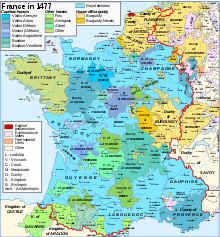
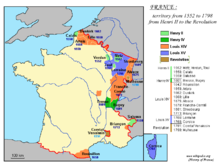
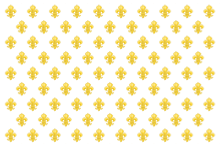
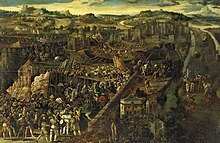


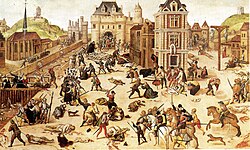
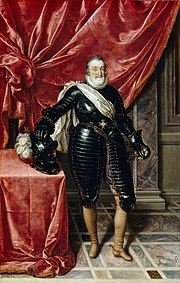












No comments:
Post a Comment